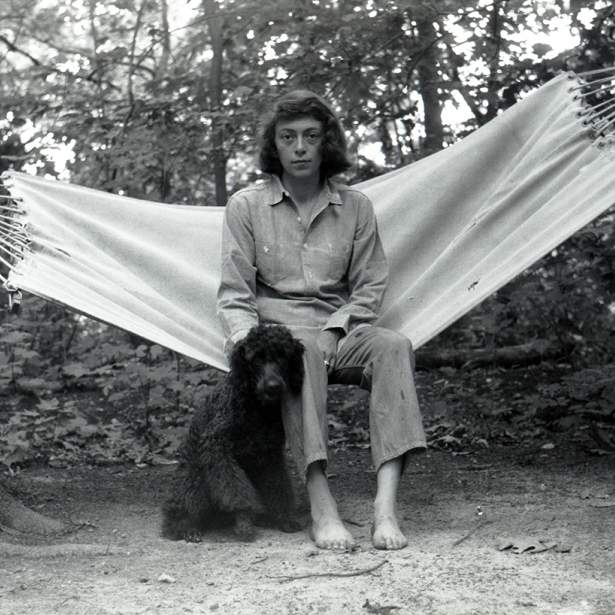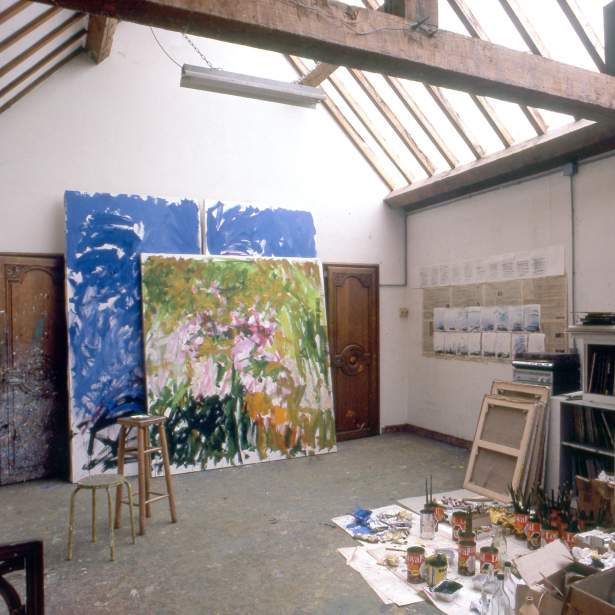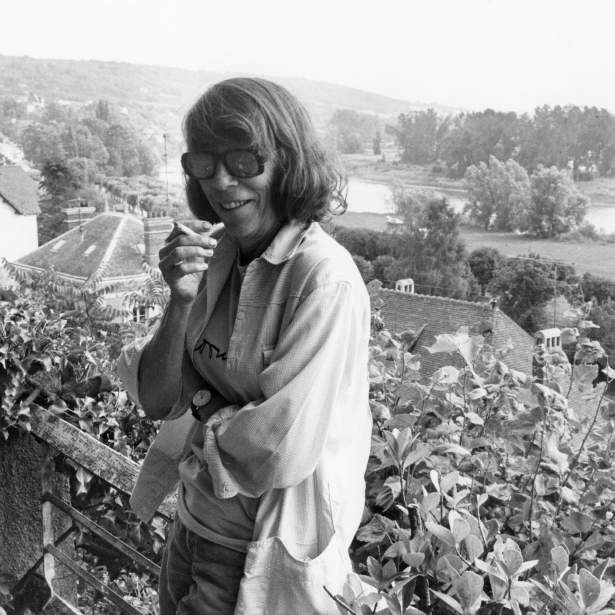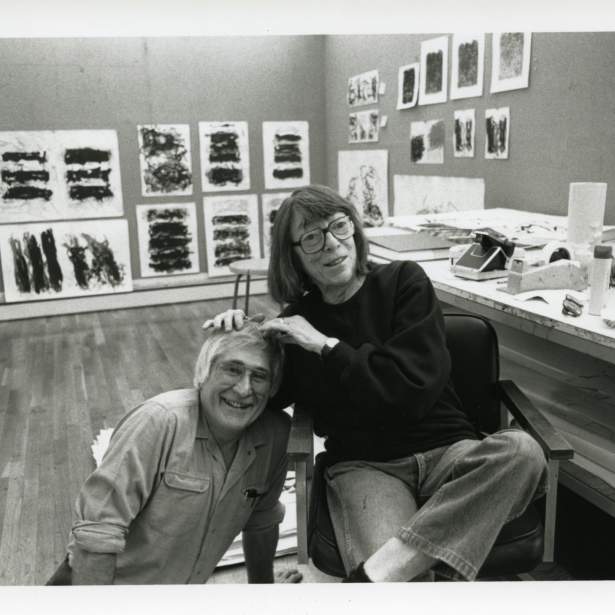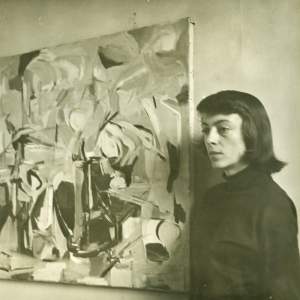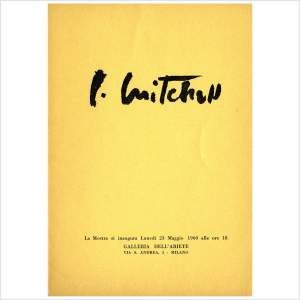Joan Mitchell (1925–1992) was an abstract artist whose exceptional career spanned more than four decades. She worked in a variety of mediums—including oil painting, pastel on paper, and printmaking—and is widely recognized as one of the most significant artists of the post-war era. Her approach to abstraction is distinguished for its physicality, daring use of color, and direct connections to her everyday experiences of landscape, people, poetry, music, and even her beloved dogs.
Born in Chicago on February 12, 1925, Mitchell was raised in a household that valued the arts—attending the symphony, visiting museums, and reading poetry. She began studying painting seriously at age 11, and later attended the School of the Art Institute of Chicago. Upon graduating in 1947, she was awarded a travel fellowship that took her to France for a year, where her paintings became increasingly abstract. Returning to the United States in late 1949, Mitchell settled in New York, and within a year, she became an active participant in the “New York School” of painters and poets. Her work was exhibited in the famous “9th Street Show” in 1951, and she rapidly established a reputation as one of the leading young Abstract Expressionist painters.

